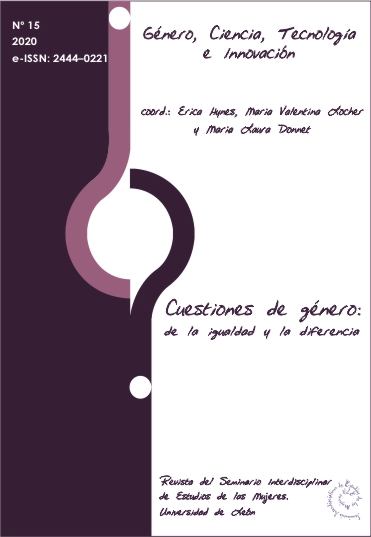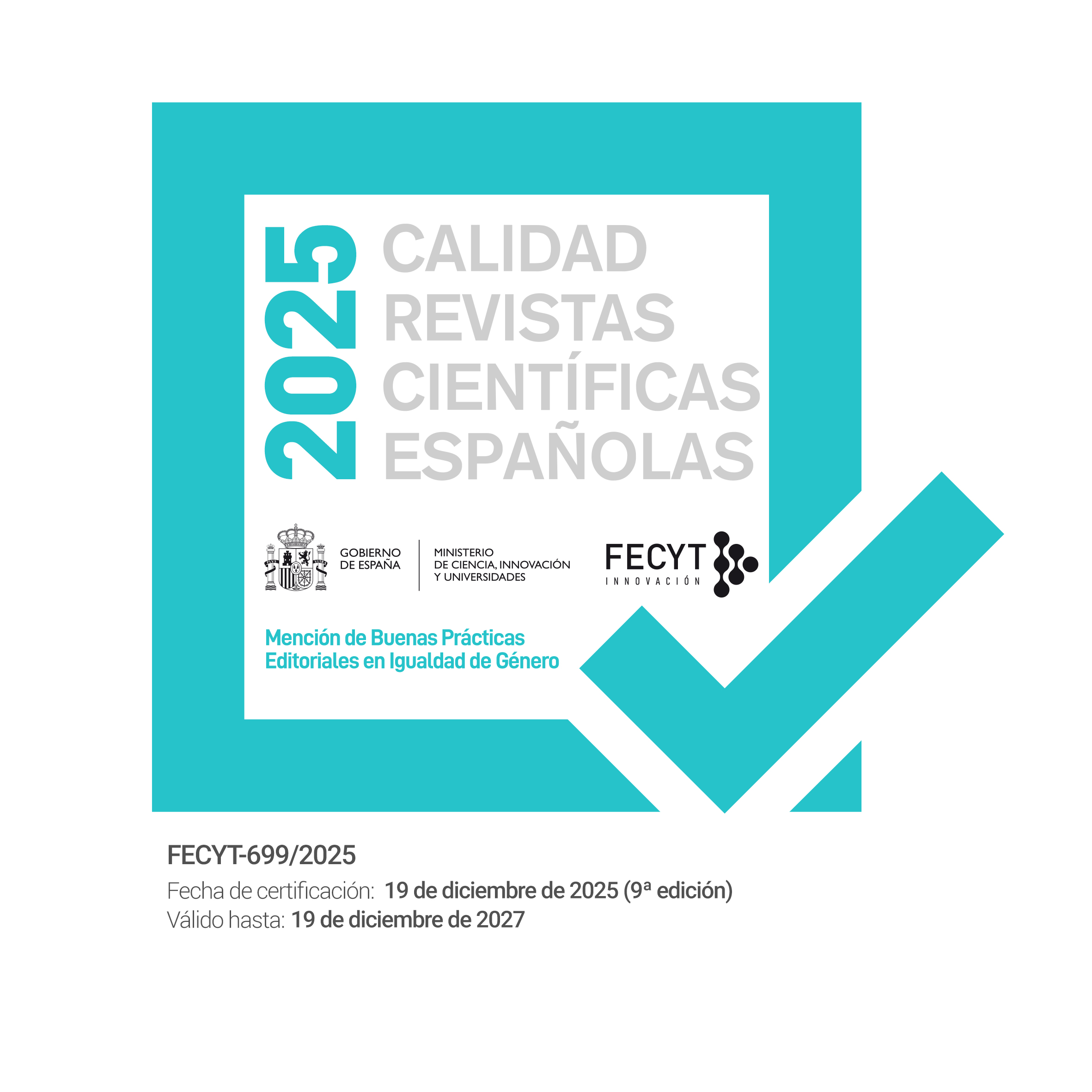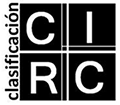Gender, age and physical activity representation in children’s colouring books
DOI:
https://doi.org/10.18002/cg.v0i15.6075Palavras-chave:
colouring books, children, gender, physical activity, representationResumo
Despite publishing houses recognizing the importance of ensuring equal representation of all people in curricular materials and scholars also noting their importance in teaching children gendered behaviours, it is still common to find stereotypically gendered non-coeducational curriculum materials in the international market. The aim of this study is to determine the representation of female and male characters in the illustrations of six colouring books published in the United Kingdom entitled “Books for Girls” and “Books for Boys”. A quantitative content analysis, and a supporting qualitative discourse analysis were carried out. This paper examines the effect of constructing gender difference in children’s colouring books. Gender bias in early childhood education poses the risk of perpetuating a manifestation of inequality.
Downloads
Métricas alternativas
Referências
Ainsworth, Barbara et al. (2000): “Compendium of physical activities: an update of activity codes and MET intensities”. In: Medicine and science in sports and exercise, vol. 32, nº. 9 Suppl, pp. 498-504.
Blaise, Mindy (2005): Playing it straight: Uncovering gender discourse in early childhood education. New York: Routledge.
Brown, Babette (1998): Unlearning discrimination in the early years. Staffordshire: Trentham Books.
Brugeilles, Carole and Cromer, Sylvie (2009): Promoting gender equality through textbooks. A methodological guide. United Nations Educational, Scientific and Cultural Organization: Paris.
Burkitt, E (2004): “Drawing conclusions from children’s art”. In: Psychologist, vol. 17, nº. 10, pp. 566-569.
Cabrera García-Ochoa and Martínez-Bello, Vladimir Essau (2014): “Libros para niñas y libros para niños”: Presencia de estereotipos de género en una colección de libros para dibujar. In: Cuestiones de género: de la igualdad y la diferencia, nº. 9, pp. 182-215.
Cooky, Cheryl, Michael A. Messner and Michela Musto (2015): ““It’s dude time!” A quarter century of excluding women’s sports in televised news and highlight shows”. En: Communication and Sport, vol. 3, nº. 3, pp. 261-287.
Connell, Robert William (2005): Masculinities. Cambridge: Polity Press.
Council of Europe (2007): Recommendation CM/Rec 13 of the Committee of Ministers to member states on gender mainstreaming in education, Oct. 10, 2007, 1006th of the Minister’s Deputies.
Council of Europe (2011): Convention on preventing and combating violence against women and domestic violence, May 11, 2011, CETS Nº.: 210.
Crawford, Patricia and Bhattacharya, Sharika (2014): “Grand images: Exploring images of grandparents in picture books”. In: Journal of Research in Childhood Education, vol. 28, nº. 1, pp. 128-144.
Davies, Bronwyn (1998): “The politics of category membership”. In: Nicola Yelland (ed.): Gender in Early Childhood. London, Routledge, pp. 131–148.
Davies, Bronwyn (2003): Frogs and snails and puppy dog tails: Preschool children and gender. Cresskill: Hampton.
Derman-Sparks, Louise and Edwards, Julie Olsen (2010): Anti-bias education for young children and ourselves. Washington, DC: National Association for the Education of Young Children.
Dutro, Elizabeth (2002): “Us boys like to read football and boy stuff”: Reading masculinities, performing boyhood. In: Journal of Literacy Research, vol. 34, nº. 4, pp. 465-500.
Fitzpatrick, Maureen and McPherson, Barbara (2010): “Coloring within the lines: Gender stereotypes in contemporary coloring books”. In: Sex Roles, vol. 62, nº. 1-2, pp. 127-137.
Frawley, Timothy (2008): “Gender schema and prejudicial recall: How children misremember, fabricate, and distort gendered picture book information”. In: Journal of Research in Childhood Education, vol. 22, nº. 3, pp. 291-303.
García Villanueva, Jorge and Hernández Ramírez, Claudia Ivonne (2016): “¿Realidad o fantasía? Roles y estereotipos sexistas expuestos a través de representaciones discursivas e iconográficas en cuentos infantiles”. In: Revista Integra Educativa, vol. 9, nº. 1, pp. 91-110.
García-Villanueva, Jorge (2017): A look into masculine identity in Mexican young men. México. Ciudad de México: Universidad Pedagógica Nacional. Horizontes Educativos.
Gooden, Angela, and Gooden, Mark (2001): “Gender representation in notable children's picture books: 1995–1999”. In: Sex Roles, vol. 45, nº. 1-2, pp. 89-101.
Hamilton, Mykol C.; Anderson, David; Broaddus, Michelle and Young, Kate (2006): “Gender stereotyping and under-representation of female characters in 200 popular children’s picture books: A twenty-first century update”. In: Sex Roles, vol. 55, nº. 11-12, pp. 757-765.
Janelli, Linda (1994): “Grandparents' depictions in children's literature: A revisit”. In: Gerontology and Geriatrics Education, vol. 14, nº. 2, pp. 43-52.
Karniol, Rachel (2011). “The color of children’s gender stereotypes”. In: Sex Roles, vol. 65, nº. 1-2, pp. 119-132.
Koivula, Nathalie (1999): “Gender stereotyping in televised media sport coverage”. In: Sex Roles, vol. 41, nº. 7/8, pp. 589–604.
Kliman, Deborah (1978): “Avoiding sexism in early childhood education”. In: Day Care and Early Education, vol. 6, nº. 1, pp. 19-21.
Kwan, Matthew; Cairney, John; Faulkner, Guy E. and Pullenayegum, Eleanor E. (2012): “Physical activity and other health-risk behaviors during the transition into early adulthood: a longitudinal cohort study”. In: American Journal of Preventive Medicine, vol. 42, nº. 1, pp. 14-20.
Let Toys Be Toys (2017): Let Books Be Books. Avaliable at: http://www.lettoysbetoys.org.uk/letbooksbebooks/ [22/05/2020].
Martínez-Bello, Vladimir Essau (2015): “Representación racial, diversidad corporal y género en las imágenes de libros de texto españoles de educación infantil”. In: Diálogos sobre educación, vol. 7, nº. 4, pp. 1-17.
Martínez-Bello, Vladimir Essau and Martínez-Bello Daniel Adyro (2015): “Depictions of human bodies in the illustrations of early childhood textbooks”. In: Early Childhood Education Journal, vol. 44, nº. 2, pp. 181-190.
Martínez-Bello, Vladimir Essau; Cabrera García-Ochoa, Yolanda; Díaz-Barahona, José and Bernabé-Villodre, María del Mar (2020): “Bodies in the early childhood education classroom: a Bourdieusian analysis of curricular materials”. In: Sport, Education and Society. In press.
Navarro, Raúl (2014): “Children’s preferences for gender-typed objects and colours: a commentary from gender research in Spain”. In: Escritos de Psicología-Psychological Writings, vol. 7, nº. 3, pp. 1-9.
McDonald, Scott (1989): “Sex bias in the representation of male and female characters in children's picture books”. In: The Journal of Genetic Psychology, vol. 150, nº. 4, pp. 389-401.
Messner, Michael (2000): “Barbie Girls versus Sea Monsters: Children constructing gender”. In: Gender and Society, vol. 14, nº 6, pp. 765–784.
Messner, Michael, Duncan, Margarte, and Jensen, Kerry (1993): “Separating the men from the girls: The gendered language of televised sports”. In: Gender and Society, vol. 7, nº 1, pp. 121–137.
Milliot, Jim (2014): “Children's books: A shifting market”. In: Publisher's Weekly. Avaliable at: http://www.publishersweekly.com/pw/by-topic/childrens/childrens-industry-news/article/61167-children-s-books-a-shifting-market.html [22/05/2020].
McDavid, Lindley; Cox, Anne and Amorose, Anthony (2012): “The relative roles of physical education teachers and parents in adolescents’ leisure-time physical activity motivation and behaviour”. In: Psychology of Sport and Exercise, vol. 13, nº. 2, pp. 99-107.
Moore, Lynn et al. (1991): “Influence of parents’ physical activity levels on activity levels of young children”. In: The Journal of Pediatrics, vol. 118, nº. 2, pp. 215-219.
Peterson, Sharyl and Lach, Mary (1990): “Gender stereotypes in children's books: Their prevalence and influence on cognitive and affective development”. In: Gender and education, vol. 2, nº. 2, pp. 185-197.
Pidgeon, Sue (1994): “Learning and reading gender”. In: Myra Barrs and Sue Pidgeon (eds.): Reading the difference, York, ME: Stenhouse Publishers, pp. 20–34.
Poarch, Renae and Monk-Turner, Elizabeth (2001): “Gender roles in children’s literature: A review of non-award-winning “easy-to-read” books”. In: Journal of Research in Childhood Education, vol. 16, nº. 1, pp. 70-76.
Publishers Association (2013): Market research and statistics. United Kingdom.
Rachlin, Susan and Vogt, Glenda (1974) : “Sex roles as presented to children by coloring books”. In: Journal of Popular Culture, vol. 8, pp. 549–556.
Roper, Emily and Clifton, Alexandra (2013): “The representation of physically active girls in children’s picture books”. In: Research Quarterly for Exercise and Sport, vol. 84, nº. 2, pp. 147-156.
Tàboas-Pais, María and Rey-Cao, Ana (2012): “Gender differences in physical education textbooks in Spain: A content analysis of photographs”. In: Sex Roles, vol. 67, nº. 7-8, pp. 389-402.
Tylka, Tracy and Calogero, Rachel (2011): “Expose the illusions, crack the codes: Contextualizing visual media to mold a new reality”. In: Sex Roles, vol. 65, nº. 7-8, pp. 461-468.
Trepanier-Street, Mary and Romatowski Jane (1999): “The influence of children's literature on gender role perceptions: A reexamination”. In: Early Childhood Education Journal, vol. 26, nº. 3, pp. 155-159.
Ullah, Hazir and Skelton, Christine (2014): “Social reproduction of gender hierarchies in sports through schooling in Khyber Pakhtunkhwa”. In: Asia Pacific Journal of Education, vol. 36, nº. 1-14, pp. 131-144.
UN General Assembly (1979): Convention on the Elimination of All Forms of Discrimination against Women. UN Doc. A/34/46. New York, NY: UN.
UN General Assembly (1993): Vienna Declaration. World Conference on Human Rights. 14–25 June 1993. Vienna, Austria.
Weitzman, Lenore; Eifler, Deborah; Hokada, Elizabeth and Ross, Catherine (1972): “Sex-role socialization in picture books for preschool children”. In: American Journal of Sociology, vol. 77, nº. 6, pp. 1125-1150.
Vertinsky, Patricia (1992): “Reclaiming space, revisioning the body: The quest for gender-sensitive physical education”. In: Quest, vol. 44, nº. 3, pp.373–396.
Wells, Kristopher; Roberts, Gayle and Allan, Carol (2012): Supporting transgender and transsexual students in K-12 schools: A guide for educators. Ottawa, ON: Canadian Teachers’ Federation.
Wright, Jan (1996): “The construction of complementarity in physical education”. In: Gender and Education, vol. 8, nº. 1, pp. 61–80.
Downloads
Publicado
Como Citar
Edição
Seção
Licença
Copyright (c) 2020 Vladimir Martínez-Bello, Joanne Hill

Este trabalho está licenciado sob uma licença Creative Commons Attribution-NonCommercial-ShareAlike 4.0 International License.
L@s autores/as que publican en esta revista están de acuerdo con los siguientes términos:
1. L@s autores/as ceden de forma no exclusiva los derechos de explotación (reproducción, distribución, comunicación pública, transformación) a la Universidad de León, por lo que pueden establecer, por separado, acuerdos adicionales para la distribución no exclusiva de la versión de la obra publicada en la revista (por ejemplo, alojarlo en un repositorio institucional o publicarlo en un libro), con un reconocimiento de su publicación inicial en esta revista.
2. Este trabajo se encuentra bajo la Creative Commons Attribution-NonCommercial-ShareAlike 4.0 International License. Puede consultarse desde aquí la versión informativa y el texto legal de la licencia.
3. Se permite y se anima a l@s autores/as a difundir electrónicamente las versiones pre-print (versión antes de ser evaluada) y/o post-print (versión evaluada y aceptada para su publicación) de sus obras antes de su publicación, ya que favorece su circulación y difusión más temprana y con ello un posible aumento en su citación y alcance entre la comunidad académica.
Cuestiones de Género utiliza exclusivamente la licencia Atribución-NoComercial-CompartirIgual 4.0 Internacional (CC BY- NC-SA 4.0).
Bajo los siguientes términos:
- Atribución: Usted debe dar crédito de manera adecuada , brindar un enlace a la licencia, e indicar si se han realizado cambios . Puede hacerlo en cualquier forma razonable, pero no de forma tal que sugiera que usted o su uso tienen el apoyo de la licenciante.
- No Comercial: Usted no puede hacer uso del material con propósitos comerciales .
- Compartir Igual: Si remezcla, transforma o crea a partir del material, debe distribuir su contribución bajo la la misma licencia del original. cualquier uso permitido por la licencia.
No hay restricciones adicionales — No puede aplicar términos legales ni medidas tecnológicas que restrinjan legalmente a otras a hacer
L@s autores/as pueden consultar los derechos de copyright y las condiciones de autoarchivo en el directorio Dulcinea.











